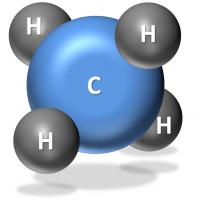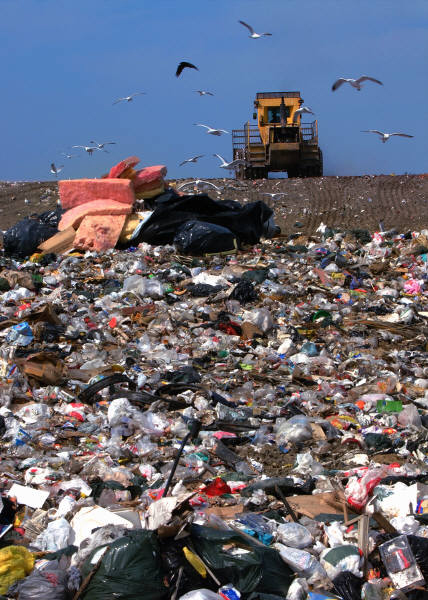Methane and the Carbon Cycle
 Methane (CH4) is also composed of one atom of carbon surrounded by four atoms of hydrogen. It is the principal component of natural gas and the second most important greenhouse gas of concern. You learned that a methane molecule is 30 times stronger than a molecule of carbon dioxide, but methane is present in smaller concentrations and has a shorter lifetime than carbon dioxide. Methane is the main component of natural gas. Methane enters the atmosphere and eventually combines with oxygen (oxidizes) to form more CO2. Methane converts to CO2 by this simple chemical reaction.
Methane (CH4) is also composed of one atom of carbon surrounded by four atoms of hydrogen. It is the principal component of natural gas and the second most important greenhouse gas of concern. You learned that a methane molecule is 30 times stronger than a molecule of carbon dioxide, but methane is present in smaller concentrations and has a shorter lifetime than carbon dioxide. Methane is the main component of natural gas. Methane enters the atmosphere and eventually combines with oxygen (oxidizes) to form more CO2. Methane converts to CO2 by this simple chemical reaction.
Landfills, rice farming and cattle farming release another minor greenhouse gas, called methane into Earth’s atmosphere. Methane is emitted during the decomposition of organic wastes and the raising of livestock. Methane is produced when bacteria decompose organic plant and animal matter in such places at wetlands (e.g., marshes, mudflats, flooded rice fields), sewage treatment plants, landfills, the guts of cattle and termites, and leakage from natural gas pipelines and from oil wells.
CH4 + O2 → CO2 + H4
methane + oxygen → carbon dioxide + hydrogen
Permafrost is permanently frozen ground that traps moisture, heat, and trillions of tons of methane deep beneath the surface. Permafrost may be as thin as a few meters or as thick as more than 1,000 meters (3,281 feet). Vast regions of permafrost in Canada, Alaska, Siberia, and the Tibetan Plateau are starting to thaw. As permafrost melts, carbon dioxide or methane is released, further increasing the concentration of atmospheric greenhouse gases.
Watch NASA's The "Sleeping Giant" in Arctic Permafrost.

